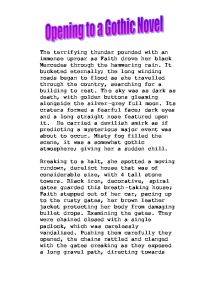
The term ‘unconscious’ was then introduced into English by the poet Samuel Taylor Coleridge (1772-1834). Indeed, it was the German Romantic philosopher Friedrich Schelling (1775-1854) who distinguished between the conscious and unconscious mind in his early work System of Transcendental Idealism (1800), labelling the latter Unbewusste (i.e. Sigmund Freud would, over half a century after Poe was writing, do more than anyone else to delineate the structure of the conscious and unconscious mind, but he was not the first to suggest that our conscious minds might hide, or even repress, unconscious feelings, fears, neuroses, and desires. Many things in the story are, to use a term later popularised by Sigmund Freud, ‘ uncanny’: simultaneously familiar yet unfamiliar another key element of the uncanny is the secret which ‘out to have remained secret and hidden but has come to light’.Īn interpretation which has more potential, then, is the idea that the ‘house of Usher’ is a symbol of the mind, and it is this analysis which has probably found the most favour with critics. Indeed, there are no overtly supernatural elements in ‘The Fall of the House of Usher’: just a general sense of something not being quite right. How does he play around with them? First, Poe renders them ambiguous rather than clear-cut. Poe condenses these into a short story and plays around with them, locating new psychological depths within these features. We have a mysterious secret afflicting the house and eating away at its owner, the Gothic ‘castle’ (here, refigured as a mansion), premature burial (about which Poe wrote a whole other story), the mad owner of the house, and numerous other trappings of the Gothic novel. A time of revolution and reason, madness and sanity, the 1750s through the 1850s provided the stuff that both dreams and nightmares were made of.‘The Fall of the House of Usher’ is probably Edgar Allan Poe’s most famous story, and in many ways it is a quintessential Gothic horror story. In its attention to the dark side of human nature and the chaos of irrationality, the Gothic provides for contemporary readers some insight into the social and intellectual climate of the time in which the literature was produced. In the twentieth and twenty-first centuries, the ongoing fascination with horror, terror, the supernatural, vampires, werewolves, and other things that go bump in the night evidences the power the Gothic continues to exert. Hyde in the nineteenth century demonstrates both the transformation and the influence of the Gothic. Certainly, any close examination of the works of Edgar Allan Poe, Bram Stoker's Dracula, or Robert Louis Stevenson's The Strange Case of Dr. There are those such as David Punter in The Literature of Terror: A History of Gothic Fictions from 1765 to the Present Day and Fred Botting in Gothic who follow the transitions and transformations of the Gothic through the twentieth century. While it may be comparatively easy to date the beginning of the Gothic movement, it is much harder to identify its close, if indeed the movement did come to a close at all. The Castle of Otranto was soon followed by William Beckford's Vathek (1786) Ann Radcliffe's The Mysteries of Udolpho (1794) and The Italian (1797) Matthew Lewis's The Monk (1796) Charles Brockden Brown's Wieland (1797) Mary Shelley's Frankenstein (1818) and Charles Robert Maturin's Melmoth the Wanderer (1820).

Walpole's novel was wildly popular, and his novel introduced most of the stock conventions of the genre: an intricate plot stock characters subterranean labyrinths ruined castles and supernatural occurrences. Finally, the Graveyard School of poetry, so called because of the attention poets gave to ruins, graveyards, death, and human mortality, flourished in the mid-eighteenth century and provided a thematic and literary context for the Gothic.

In addition, Edmund Burke's 1757 treatise, A Philosophical Enquiry into the Sublime and Beautiful, offered a philosophical foundation. First, Walpole tapped a growing fascination with all things medieval and medieval romance provided a generic framework for his novel. Although Horace Walpole is credited with producing the first Gothic novel, The Castle of Otranto, in 1764, his work was built on a foundation of several elements. Gothic literature, a movement that focused on ruin, decay, death, terror, and chaos, and privileged irrationality and passion over rationality and reason, grew in response to the historical, sociological, psychological, and political contexts of the late eighteenth and early nineteenth centuries.


 0 kommentar(er)
0 kommentar(er)
